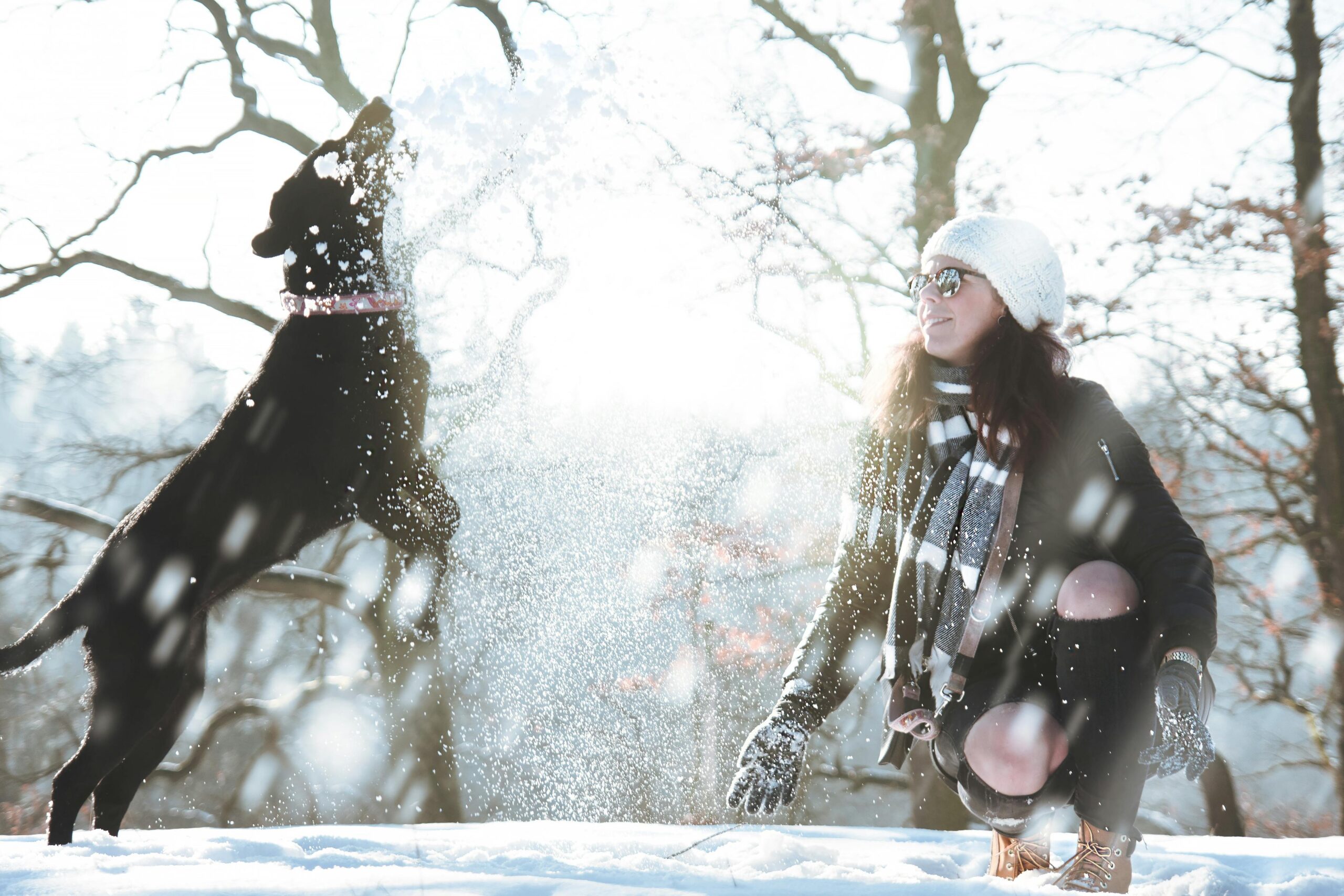Having a calm, laid-back dog is a joy—whether they’re snoozing at your feet or happily watching the world go by. But even the most mellow pups can benefit from intentional care to keep them content, engaged, and emotionally balanced. Just like humans, dogs thrive with a bit of structure, enrichment, and connection.
Here’s your guide to keeping your chill pup relaxed and happy, ensuring they continue to live their best, stress-free life!
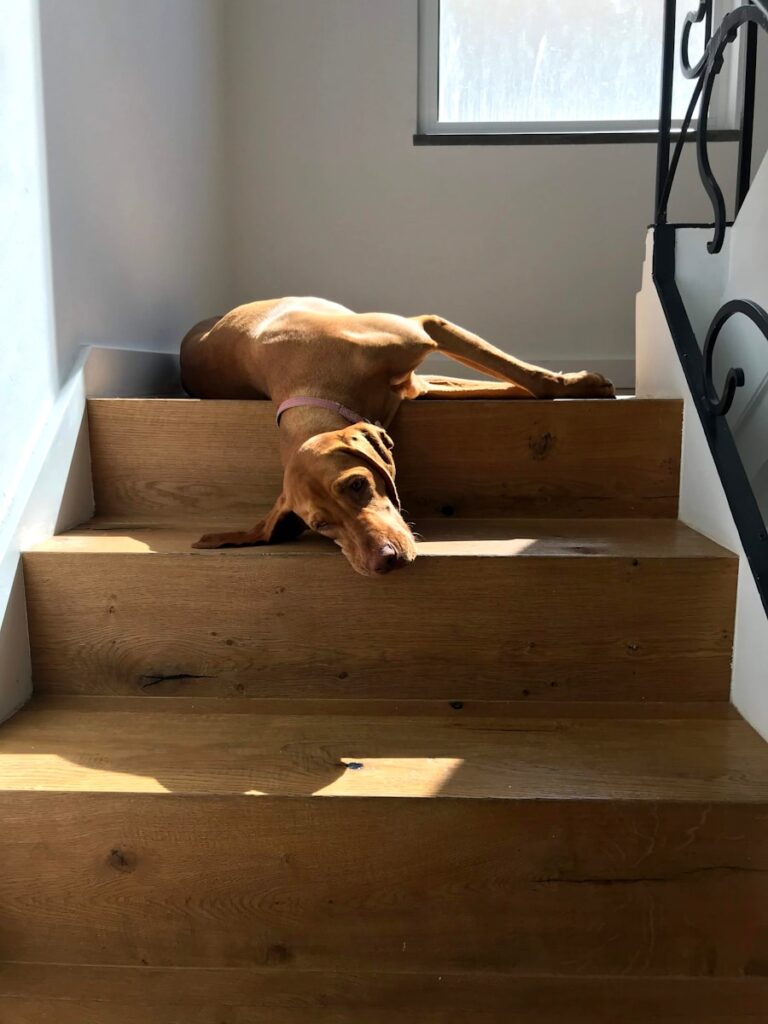
1. Create a Calm, Comfortable Space
Your dog’s environment plays a big role in their overall sense of peace. Giving them a cozy, safe spot where they can relax helps reinforce their calm nature.
- Quiet Retreat: Designate a spot away from high-traffic areas of your home where your dog can unwind.
- Soft Lighting: Natural light or warm lamps can create a serene atmosphere compared to harsh, bright lights.
- Predictable Routine: Dogs feel safest when they know what to expect. Keep feeding, playtime, and walks on a consistent schedule.
Pro Tip: Play calming background noise, like soft nature sounds or ambient music, to enhance their relaxation time.
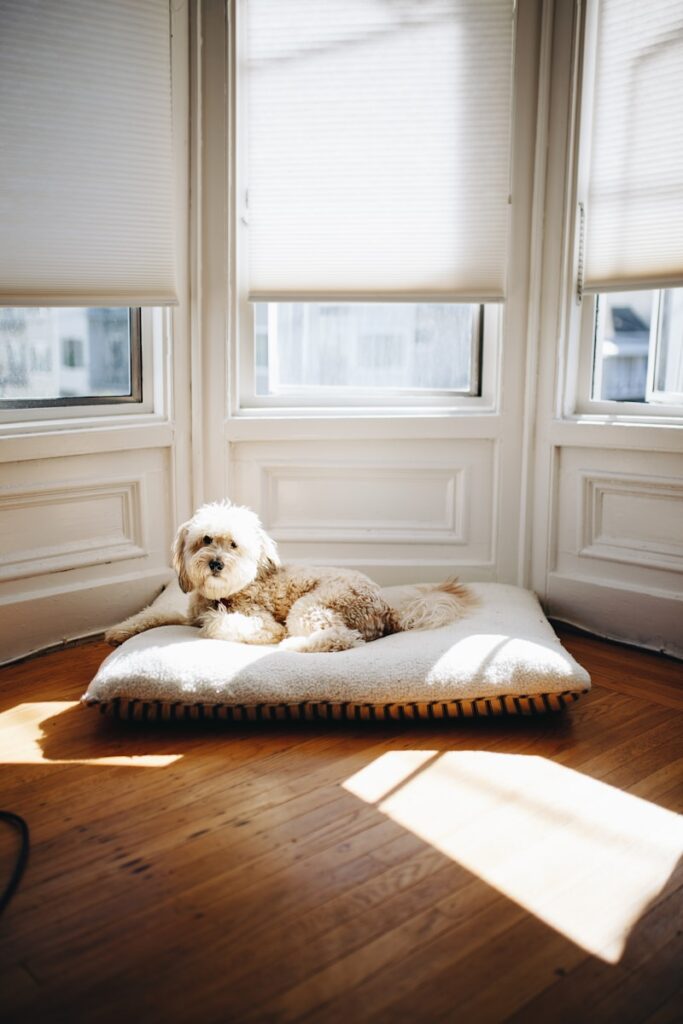
2. Daily Gentle Enrichment Activities
Calm dogs may not seek out stimulation as much as their energetic counterparts, but they still need mental engagement to stay emotionally balanced.
- Snuffle Mats and Slow Feeders: These can make mealtime more enriching, encouraging your dog to “forage” at their own pace.
- Nose Work Games: Hide a few treats around the room and let your dog sniff them out—it’s a fun, low-energy way to engage their brain.
- Scent Walks: Instead of focusing on distance, let your dog take their time during walks and sniff to their heart’s content.
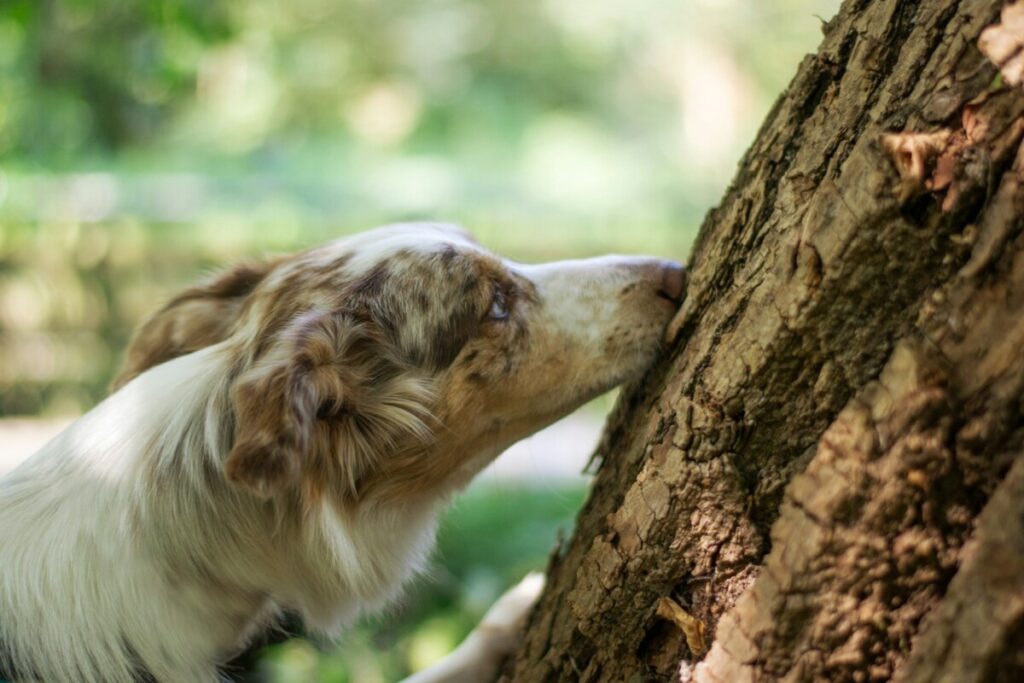
3. Encourage Gentle Movement and Play
While calm dogs may prefer lounging over long hikes, regular movement is still essential for their physical and emotional health.
- Gentle Strolls: Short, slow walks in quiet neighborhoods or parks can be soothing and stimulating at the same time.
- Stretching Exercises: Light stretching (or canine yoga!) can help keep their muscles flexible and strong, especially for senior dogs.
- Low-Key Fetch: Try rolling a soft toy or ball gently indoors rather than full-speed throws to keep the vibe relaxed.
Holistic Tip: Consistent, low-intensity exercise can also help prevent restlessness or pent-up energy, especially on lazy days.

4. Prioritize Emotional Bonding
Calm dogs often form deep emotional bonds with their humans and appreciate quality time, even if it’s quiet and simple.
- Snuggle Time: Simply lying together on the couch or the floor can deepen your connection.
- Quiet Grooming: Gentle brushing sessions not only keep their coat healthy but also provide a soothing sensory experience.
- Mindful Moments: Sit quietly with your dog in the yard or by the window and enjoy peaceful moments together—no distractions, just presence.
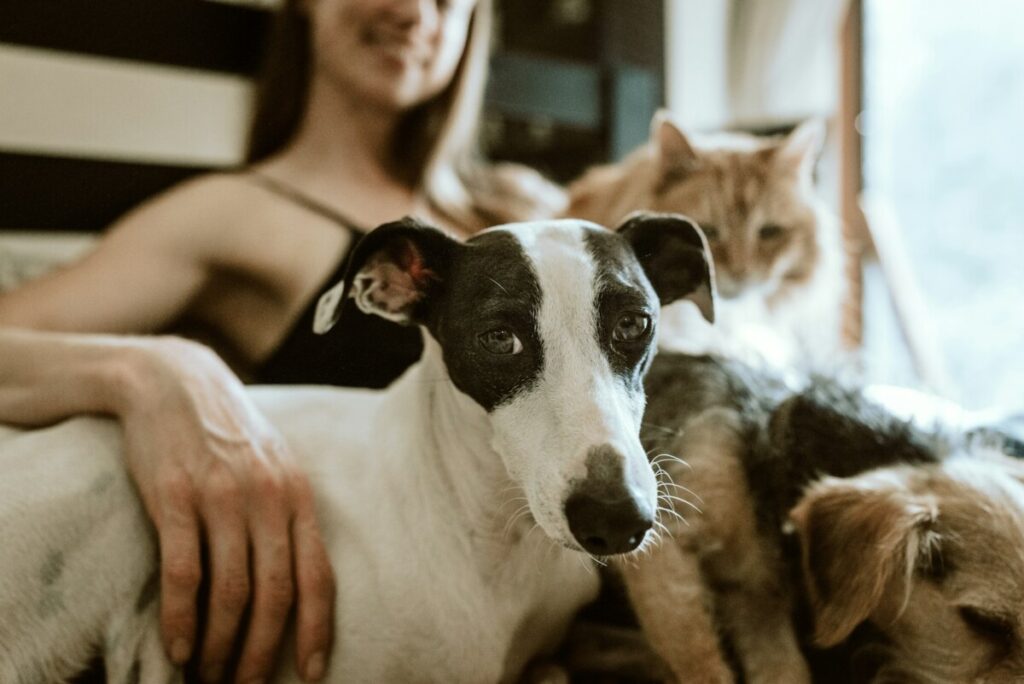
5. Foster Calm in Everyday Life
Life can be unpredictable, but small changes can help your calm dog feel safe, even during unexpected events.
- Positive Reinforcement: Reward calm behavior in new situations to build their confidence.
- Avoid Overstimulation: When visitors come over, create a quiet space for your dog where they can retreat if needed.
- Soothing Transitions: If your routine changes (like moving homes or traveling), bring familiar items like their bed or a favorite blanket to make new spaces feel safe.

6. Respect Their Downtime
Sometimes, the best way to support your calm dog’s happiness is by respecting their need for alone time. Just like people, dogs may crave solitude after social interactions or busy days.
- Avoid Overhandling: If your dog retreats to their safe space, let them relax without interruptions.
- Observe Their Signals: Yawning, turning away, or lying down can all be signs that your dog is ready for some quiet time.
Holistic Tip: Downtime isn’t just “doing nothing”—it’s restorative and helps dogs process their day, keeping them emotionally balanced.
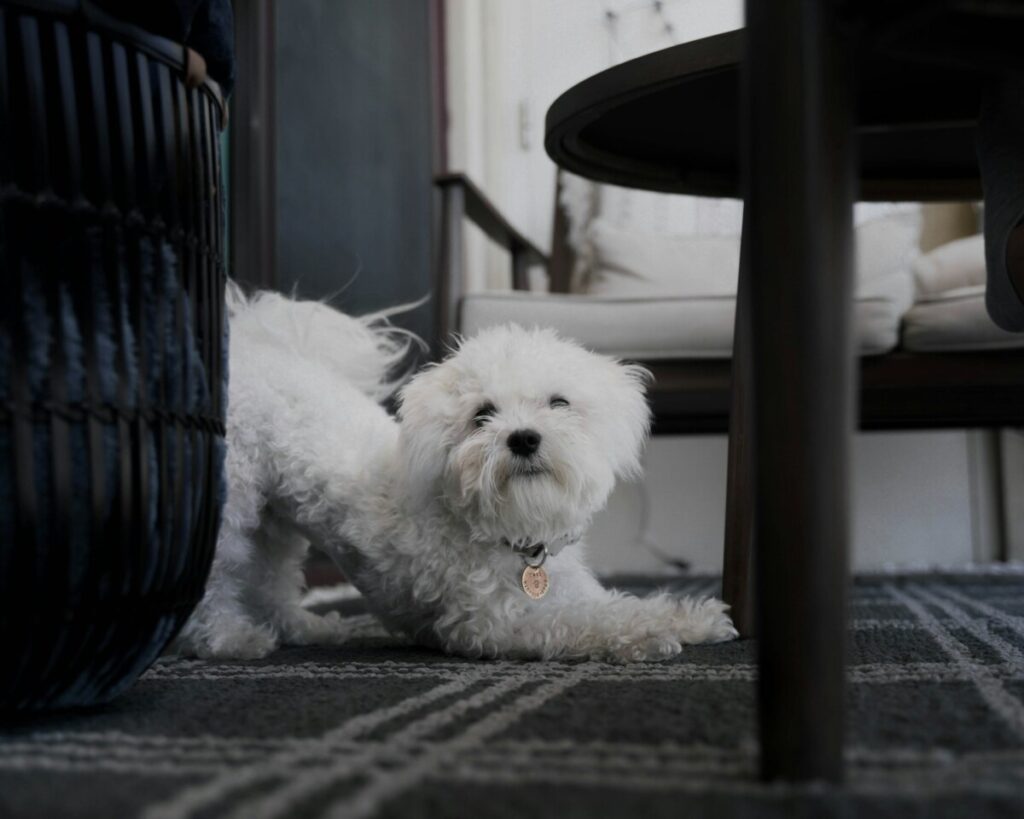
7. Calm Communication: How You Interact Matters
Your tone, body language, and actions can have a big impact on your dog’s sense of calm.
- Speak Softly: Calm, gentle tones help reinforce peace. Avoid sudden loud noises or abrupt movements.
- Reassuring Touch: Soft, slow pets or a calming hand resting gently on their back can be more soothing than over-enthusiastic pats.
- Stay Present: When you’re spending time with your dog, minimize distractions like phones or TV and focus on that shared moment.
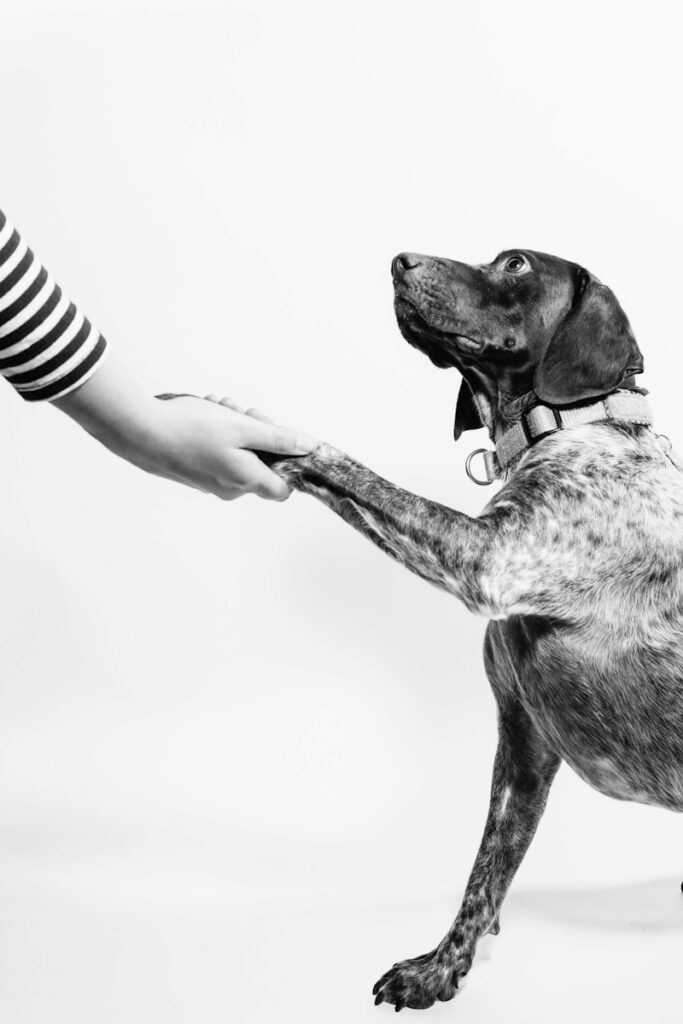
Conclusion:
Keeping your calm dog happy and relaxed isn’t about doing more—it’s about being intentional with your time, space, and interactions. From cozy retreats to gentle playtime, fostering an environment where they feel secure and valued can make all the difference.
At the end of the day, your dog’s calm presence is a gift—one that reminds us to slow down, savor the quiet, and appreciate the little moments. What’s your favorite way to unwind with your dog? Share your stories and tips in the comments below!
Discover the ultimate winter care tips for dogs! Keep your pup cozy, healthy, and safe this season. For more pawsome tips, visit our blog: TheTrustedTail.com/Blog.



